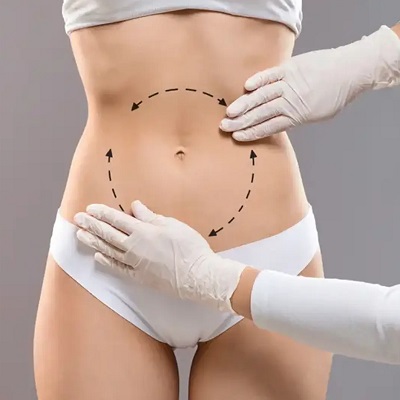Enhancing body contours without surgery has become more accessible, thanks to advanced aesthetic treatments. Two of the most popular options are body fillers and fat transfer, both offering volume restoration and shape enhancement. While body fillers are non-invasive injectables that provide instant results, fat transfer uses a person’s own fat for augmentation. If you’re considering Body Fillers in Muscat, understanding how these methods compare can help you make the best decision for your body goals. Factors like longevity, recovery time, and natural-looking results play a crucial role in determining the right choice.
Choosing between body fillers in Muscat and fat transfer depends on several aspects, including the desired outcome, personal preference, and medical considerations. Each method has unique benefits and limitations, making it important to evaluate which suits your aesthetic needs. While fillers are ideal for temporary volume and minor corrections, fat transfer offers a more permanent solution with natural-looking effects.
What Are Body Fillers?
Body fillers are injectable substances used to add volume, contour specific areas, and smooth irregularities. These fillers are made from biocompatible materials designed to integrate with the body for a natural appearance.
- Types of Body Fillers:
- Hyaluronic Acid (HA) Fillers – Hydrating and volumizing, lasting 6 to 12 months
- Calcium Hydroxylapatite (CaHA) Fillers – Stimulates collagen for longer-lasting volume (12 to 18 months)
- Poly-L-Lactic Acid Fillers – Encourages natural collagen production, lasting 2 to 3 years
- PMMA Fillers (Polymethyl Methacrylate) – Semi-permanent solution, lasting 5+ years
- Common Treatment Areas:
- Buttocks augmentation for a fuller shape
- Hip dips correction for smoother contours
- Hand rejuvenation to restore lost volume
- Arm and calf enhancement for proportionate definition
What Is Fat Transfer?
Fat transfer, also called fat grafting, involves removing fat from one part of the body (such as the abdomen or thighs) and injecting it into another area to restore volume. This process offers natural-looking results since it uses the patient’s own fat cells.
- How Fat Transfer Works:
- Fat is extracted through liposuction
- The harvested fat is purified to remove impurities
- The purified fat is reinjected into the targeted area
- Best Areas for Fat Transfer:
- Buttocks (Brazilian Butt Lift or BBL)
- Breast augmentation for subtle enhancement
- Facial volume restoration (cheeks and under-eye hollows)
- Hands for a youthful appearance
Key Differences Between Body Fillers and Fat Transfer:
Both treatments provide volume restoration, but their application and longevity differ significantly.
- Procedure and Recovery:
- Body Fillers – Quick, in-office procedure with no downtime
- Fat Transfer – Requires liposuction and may have a recovery period of 1-2 weeks
- Longevity of Results:
- Body Fillers – Lasts from months to years, depending on filler type
- Fat Transfer – Permanent results, though some fat may be reabsorbed
- Natural Feel and Appearance:
- Body Fillers – Provides instant volume but may feel slightly firmer
- Fat Transfer – Uses the body’s own fat for a natural texture
- Reversibility:
- Body Fillers – Some fillers can be dissolved if needed
- Fat Transfer – Permanent and non-reversible once grafted
Who Should Choose Body Fillers?
Body fillers are ideal for those seeking a non-surgical, quick-fix solution with minimal commitment.
- Best for Individuals Who:
- Want instant volume enhancement without surgery
- Prefer temporary treatments to test out results
- Need minimal downtime and quick recovery
- Have minor contour irregularities they want to smooth out
Who Should Choose Fat Transfer?
Fat transfer is a better option for those looking for a long-term solution using natural body fat.
- Best for Individuals Who:
- Prefer natural results that last for years
- Have enough fat for extraction and transfer
- Are comfortable with a surgical procedure and recovery time
- Want to enhance multiple areas using their own fat
Pros and Cons of Body Fillers:
✔ Quick procedure with no downtime
✔ Immediate results with customizable volume
✔ Reversible in some cases
✔ Suitable for those without excess body fat
✖ Requires maintenance treatments
✖ Can be more expensive over time due to repeat sessions
✖ May not provide as natural a feel as fat transfer
Pros and Cons of Fat Transfer:
✔ Uses the body’s own fat for a natural look and feel
✔ Permanent results without the need for synthetic fillers
✔ Can enhance multiple areas with a single procedure
✔ Improves body proportions by removing unwanted fat
✖ Requires surgical intervention and downtime
✖ Some fat reabsorption occurs, requiring touch-ups
✖ Not suitable for individuals with low body fat
Cost Comparison: Which Is More Affordable?
The cost of body fillers versus fat transfer varies based on multiple factors, including clinic reputation, practitioner expertise, and the amount of product used.
- Body Fillers – Priced per syringe; costs accumulate with repeated sessions
- Fat Transfer – Higher initial cost due to liposuction but longer-lasting results make it cost-effective over time
Making the Right Choice:
The decision between body fillers and fat transfer depends on personal goals, budget, and comfort level with invasive procedures. If you seek body fillers in Muscat, consulting an experienced specialist can help determine the best treatment plan. Whether opting for a quick enhancement with fillers or a natural, long-lasting result with fat transfer, both options provide effective solutions for body contouring.





Comments